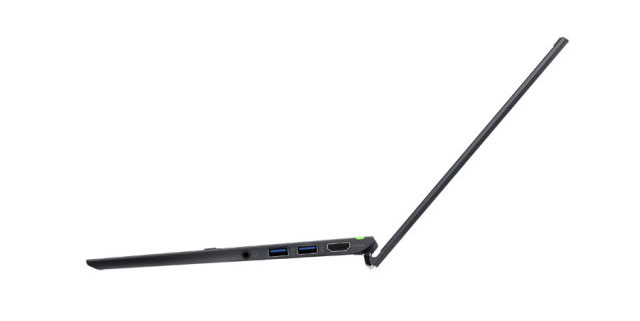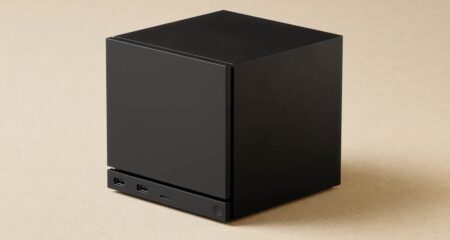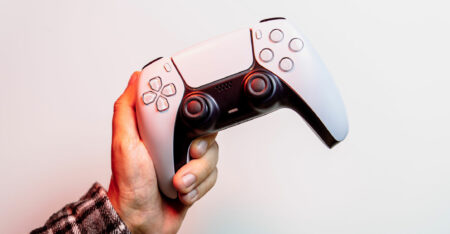
PC users haven’t exactly been spoilt for choice in recent years when it comes to ultraportable notebooks. Those that have been able to compete with Apple’s MacBook Air have tended to be rather pricey.
But with its updated Vaio range, and particularly the new Vaio Pro 13, Sony is taking the fight straight to Cupertino’s front door.
Like Apple’s new Air line-up announced a few weeks back, the Pro 13 is powered by Intel’s latest Haswell processors, which offer much greater battery life. Apple’s new 13-inch MacBook Air has a claimed battery life of 12 hours.
Sony’s Vaio Pro 13 may not stretch to half a day, but in our experience it managed at least six hours of normal use — browsing, fiddling with settings and playing the odd video. That’s enough to annoy even the most tolerant coffee shop owner.
The other benefit Haswell processors offer is speed. The Vaio Pro 13 boots almost instantly and, even though the Sony has a Core i5 processor rather than the more potent i7, performance in Windows 8 is superb, even on our review model with its paltry 4GB of RAM.
The recently updated MacBook Air range includes the same amount of RAM and the same processor, but they maintain the screen resolution of previous generations of Airs. Sony, meanwhile, has opted for a full HD (1 920×1 080-pixel) display in the 13-inch Vaio Pro and no doubt borrows insights and design decisions from its Bravia television division. The result is a crisp, contrast-rich display that easily beats the Air (but which probably accounts to a large extent for the difference in battery life).
Perhaps the most glaring difference between the Vaio Pro and its opposite number from Apple is the weight. The 13-inch Air weighs 1,35kg, while the Vaio Pro comes in at just 1,06kg. The Vaio is so light, in fact, that it feels like it must be a display model that doesn’t actually have any electronics inside its plastic shell.
It’s also unnervingly slim. The only way the Vaio could be any slimmer is if the two USB 3 ports and the HDMI port could themselves be made slimmer.
In addition to those ports, there’s an SD card slot and 3,5mm audio jack on the right-hand side, with the left side dedicated to the port for the power plug and a grille for heat dissipation from the processor.

The lightweight construction of the Pro 13 is mainly due to the use of carbon fibre. The only downside of opting for carbon fibre is that the Vaio Pro does feel flimsier than the Air and can be bent with a little more ease than we’d like. There’s also some give when typing enthusiastically. The Vaio still looks like a top-end device, but it does feel less hardy than the Air and this might put some people off it. Of course, laptops are meant to be treated with care and Sony’s offering doesn’t exactly feel like it’ll fall apart.
The Chiclet-style keyboard on the Vaio is quiet and responsive and, importantly, back-lit. The trackpad is also excellent as it’s large, responsive and supports multi-touch taps and gestures.
The only thing we don’t much care for on the Vaio is the dedicated “Assist” button positioned above the F5 key. Pressing it brings up Sony’s VaioCare, a built-in help guide that hardly seems worthy of its own button.
There are two versions of the Vaio Pro 13 — consumer and professional — with the latter offering more storage and RAM. We reviewed the consumer version, which ships with a 128GB solid state drive. In the past, that would have seemed too little, but as people move their computing into the cloud, it’s enough to get by.
What’s amazing is the price of the Pro 13: at R11 999, it’s a full R2 000 less than the equivalently equipped 13-inch Air. Sony’s not only built a laptop that beats the Air in specifications, but actually undercuts it on price.

The professional version, which ships with a 256GB solid-state drive, a snappier Core i7 processor, a touch screen and 4GB of RAM, costs R17 999, compared to the R17 199 for the 256GB Air (which has no touch screen and a Core i5 processor).
So, should you buy the Air or the Vaio Pro? It’s hard to answer. The right question, perhaps, is: PC or Mac? And does extended battery life trump higher screen resolution?
Sony’s Vaio Pro is a staggering feat of contemporary industrial design. It looks great, it’s incredibly portable, it’s more than capable when it comes to performance, and it doesn’t cost the earth. What’s not to like? — (c) 2013 NewsCentral Media




